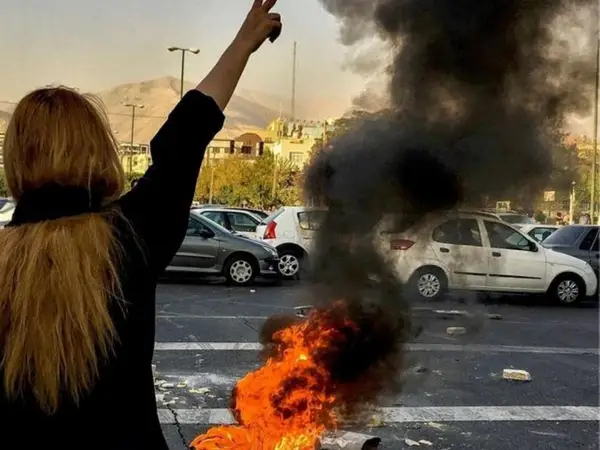The landscape of Iran protests after three months is highlighted by condemnations of the government crackdown as more dissidents are jailed and in danger of execution.
Antigovernment protests continued overnight on Saturday in several cities with reports of security forces kidnapping at least two young women from their homes in Tehran’s neighborhood of Ekbatan.
A large disturbance also broke out in the Central Prison of Karaj, where some of the arrested protesters were being held. According to state media, at least one prisoner was killed during the unrest. Apparently, a fire and tumult broke out when prisoners blocked the entrance of a ward and chanted slogans against the regime and its ruler Ali Khamenei following the transfer of an inmate on death row to solitary confinement.
In addition to daily protests on streets and sit-ins at universities, strikes continued among employees of many industries, particularly in oil, gas and petrochemical sectors. On Sunday, firefighters in the northeastern city of Tabriz held a demonstration outside the city council building, protesting their low salaries and work conditions. Setting fire to trash cans and government buildings, especially those of the seminaries and bases of Basij paramilitary forces, has become a regular method of protests during the past three months.
Grassroot groups and activists have also announced calls for another three-day nationwide protests and strikes starting Monday, for December 19, 20, and 21.
The voices of condemnation by some Iranian religious and political figures, even regime insiders are increasing against the regime’s human rights violations aimed at quashing the ongoing protests that show no sign of ending.
In a statement on Sunday, hundreds of intellectuals and cultural figures as well as activists strongly condemned the executions of protesters describing them “systematic murders by the regime.” Famous writers, sociologists, and university professors are among the signatories, and their number is still growing.
The signatories said the Islamic Republic has executed two protesters since the beginning of the “Woman, Freedom, Life Movement” in mid-September, while its strategy of intimidation and executions has not managed to ensure its legitimacy and is on the brink of collapse.
The regime has so far executed Mohsen Shekari and Majidreza Rahnavard, both 23, and based on the latest report by Iran Human Rights Organization, 39 other people are at risk of execution on charges of “war against God” and “corruption on earth.” The Oslo-based group also added that at least 469 people, including 63 children and 32 women, have been killed by security forces in the current nationwide protests in Iran.
It also noted that there is serious concern about the imminent execution of six protesters after one detainee with a confirmed death sentence was transferred from the general ward of Rajai Shahr Prison in Karaj to solitary confinement and at least five protesters detained in the western city of Oshnavieh charged with ‘moharebeh’ were transferred from Urmia Central Prison to an unknown location. Moharebeh is an Islamic-Arabic term that in the lexicon of the Iranian regime means “fighting God” and its punishment is death.
